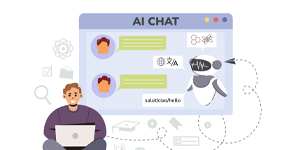People Analytics 101: Predict Turnover & Identify Talent
It can be exceptionally dangerous for a business to eliminate key employees in today's talent-driven competitive environment. Spending goes decreased, morale decreases and institutional understanding goes down when there is an excessive amount of turnover.
The chance to find rising stars along with future leaders, regarding the contrary hand, frequently goes without the opportunity. Enter people analytics the science of using data to understand, forecast and influence human behavior at work.
By applying HR analytics, workforce analytics, and predictive HR analytics, companies can more confidently spot which employees are most likely to leave, and which have high potential to lead. In this primer, we’ll walk you through how to use analytics for people to predict employee turnover, how to execute employee turnover prediction, and how to use data to make smarter talent identification decisions. We'll also share case studies of people analytics in action and a step-by-step guide to help HR teams adopt it.
Is employing data in HR just a trend? No, it's becoming standard practice. When companies implement data-driven HR, their businesses are more likely to keep their most talented staff members, keep them from going elsewhere, and develop pools of candidates with great potential.
What Are People Analytics, HR Analytics & Workforce Analytics?
Before diving into employee turnover prediction and talent identification, it's important to understand find out what each of these ways of thinking means and how they fit into a current, data-driven HR plan.
Understanding the Core Concepts
- People analytics (sometimes referred to as HR analytics) is the organized process of gathering information about people and how they act at work and figuring out what it all means. The goal is to help businesses make better, more fact-based choices about hiring, teaching, managing performance, paying employees and keeping them. As opposed to guessing or going with your feelings, analytics for people uses measurable insights from different data sources, such as digital tools for teamwork, attendance records and performance reviews to predict future trends and outcomes.
- HR analytics, while similar, often focuses specifically on improving traditional human resources functions. In this group are things like efficient hiring, fair pay a diverse workforce, and managing employees throughout their entire career. It helps HR leaders see how well their policies and programs match up with business goals. This way, choices are based on facts rather than stories.
- Workforce analytics, on the other hand, takes a more strategic, large-scale approach. It is about examining workforce patterns at the organizational or enterprise level such as modeling staffing needs, predicting the quantity and demand of talent and making plans for long-term workforce structures. One example is that a company could use workforce analytics to guess how many software engineers or sales people it will need in two years based on growth projections and exit data.
How They Work Together
In practice, these three areas analytics for people HR analytics and workforce analytics are deeply interconnected.
A typical flow might look like this:
- Analytics for people collects information about each person like who is likely to quit or who shows a lot of promise.
- These findings are used by HR analytics to improve HR processes like hiring, engagement, and leadership programs.
- Workforce analytics aggregates these patterns to make organization-wide decisions such as budgeting, headcount forecasting, or succession planning.
When properly combined these fields give a full 360° picture of a company's human capital, ranging from individual employee behavior to large-scale staff planning.
Example in Action: Imagine a global tech company using people analytics to assess why a certain regional office has higher attrition also. An important factor that the HR analytics team finds when looking at statistics about manager feedback, pay equity and performance reviews is the lack of promotion possibilities. According to workforce analytics the company will have a 20% skill gap in engineering within a year if the rate of turnover stays the same. With this complete picture, leaders can plan specific actions, like changing the rules for promotions and starting training programs, before employee turnover affects business.
Why Predictive Analytics for HR Matters
Before turning to how to implement it, here’s why predictive HR analytics (or predictive analytics for people) matters:
- Cost of turnover is steep. Replacing an employee often costs 50 % to over 150 % of their annual salary when you include recruiting, onboarding, lost productivity, training, and cultural disruption.
- Proactive vs reactive. Traditional HR responds after someone resigns. Predictive models let you intervene ahead of time.
- Better talent retention. Using people analytics to predict turnover means you can more wisely invest retention resources (e.g., bonus, development offers) on individuals most at risk.
- Talent pipelines and succession. With data, you can spot which employees show signals of becoming high-potential leaders and begin to groom them.
- In short: organizations using data-driven HR shift from firefighting attrition to strategically shaping the workforce.
How To Use People Analytics to Predict Employee Turnover
Here’s a step-by-step guide to using workforce analytics to retain top talent and run employee turnover prediction models.
1. Define the business question & scope: You need to choose which part of your staff you want to model. All of the workers, or just some of them (like salespeople, customer service reps, engineers)? Within what amount of time? Three months, six months, twelve months? With this much clarity, your model is going to be functional.
2. Gather and integrate data: To build robust predictions, collect data from multiple sources (HR systems, engagement surveys, performance reviews, communication tools, etc.). Common useful features include:
- Demographic and HR information: length of time worked, age, department, manager, pay, history of promotions, training hours and previous roles.
- Information about performance and engagement, such as ratings of performance, goal achievement, survey answers, eNPS and absences.
- Behavioral or "signal" data includes things like system logins, email and contact habits, meeting attendance, requests for internal mobility and the number of times people are late.
- Data from outside sources, such as job ads from competitors, macroeconomic indicators, and changes in the job market
Not all raw data is equally useful, feature engineering and cleaning are essential.
3. Prepare the material and label it: Get rid of any records that are missing, duplicate or wrong. Set a name (target variable) that says, for example "yes" or "no" to whether an employee quit in the next 6 or 12 months (i.e., define turnover window). To prevent overfitting, split your dataset into training, validation and holdout (test) sets.
4. Select models and train: Statistical methods like logistic regression, random forest, support vector machines, survival analysis, neural nets and mixed or cluster-based models are often used to make predictions. As an example:
- A study in community mental health centers used random forest to guess how many people would leave and it got an AUC > 0.8.
- Another study used both clustering and artificial neural networks to better divide workers into groups and make more accurate predictions.
Use metrics like AUC-ROC, precision, recall, F1, and calibration to test your models. Do the predicted probabilities match the measured rates?
5. Interpret & explain predictions: It's very important that people in HR or management can trust the plan. You can use tools for explaining things (like SHAP values, feature importance scores and partial dependence plots) to find out what makes each person "flight risk" different.
6. Operationalize & embed in workflows: Build dashboards or risk-score portals for managers. Attach action plans: for example, if model flags someone, suggest retention actions (career check-ins, bonus, mentorship). Automate periodic retraining and recalibration of the model
7. Keep an eye on, iterate and check: See how well the predictions match up with the real turnover. Get input, improve features, change thresholds and keep checking for bias or drift.
Use Cases & Case Studies of People Analytics in Action
Let's look at real-world examples to illustrate how people analytics can deliver impact and how data helps identify high-potential employees in practice.
Case Study A: HP’s Flight Risk Model
As many as 20% of HP's sales staff left the company every year. Using data from two years of employees, they made a "flight risk" number to figure out which people were most likely to quit. It's interesting that they found that promotions without enough pay raises increased the risk of loss which seemed counterintuitive at first.
They made sure only select managers could see flight risk scores, paired the insights with key risk drivers, and trained managers to act on them.
Case Study B: Johnson & Johnson — Graduate Hiring & Retention
Johnson & Johnson questioned its belief that people hired later in their careers were more stable. By looking at 47,000 workers' HR data, they found that recent college graduates stayed longer. They changed how they hired people so that they could hire more early-career workers (by expanding their leadership development program). This helped them keep employees longer without affecting their work.
Case Study C: Gore Mutual Insurance
Gore Mutual adopted a analytics for people platform (Visier) to replace spreadsheet-based HR. Within six months, they uncovered insights on attrition risk, engagement, and compensation. They reported ~25% improvements in retention and measurable improvements in engagement scores.
Case Study D: Credit Suisse (Predictive Retention Savings)
Credit Suisse deployed predictive analytics for turnover, analyzing patterns of compensation, engagement, performance, and tenure. They claimed to save roughly USD 70 million a year by retaining a greater share of their workforce.
Talent Identification: Using Data to Spot High-Potential Employees
While turnover prediction prevents loss, talent identification (or how data helps identify high-potential employees) is the complementary side of people analytics. Here’s how to do it:
- Define “high potential” criteria: A few common dimensions are job mobility, the ability to lead, the ability to learn quickly, the variety of roles, the consistency of performance and the readiness for the future.
- Compile relevant data sources: Performance trajectories (growth rate, consistency). Stretch assignments, cross-functional projects. Feedback from 360 reviews or peer assessments. Learning and development participation. Internal mobility requests or promotions.
- Build predictive models or scores: You can build a scoring model (e.g., weighted features) or more advanced ranking / classification algorithms to flag high-potential candidates. Utilize a process similar to turnover modeling: separate the data, train the model, check its accuracy and describe the significance of each feature also.
- Calibrate & embed in programs: High-potential workers have been paired with leadership training, mentoring, rotational assignments, or planning for the next person to take over.
- Track outcomes: Keep an eye on those who were flagged over time to see if they get promoted, stay longer or take on leadership roles. Your model gets better with this feedback loop. Example: In the UK conglomerate case study from AIHR a leadership development program was measured via analytics. Participants went on to outperform control groups and internal mobility rose by 25%. This suggests their program helped identify and develop future leaders.
Best Practices, Pitfalls & Ethical Considerations
Implementing people analytics (especially for figuring out who will leave or finding ability) is strong, but it also comes with some risks. This is a list of important best practices and typical mistakes:
Best Practices
Starting small is the best way to go. Try it out with a small group, like one area and then expand from there. HR, data science, legal, safety and managers should all work together across functions. Explain how the models work and how the data is used and let people choose not to use them or give their permission. Check for gender, race, age and disability bias to protect against automated bias. Think about what you can do with the information; it's only useful if you know what to do with it. Continual updating: train models again and again as business conditions, habits or culture change.
Pitfalls to Avoid
Using only past data without taking into account how things are changing; overfitting models that don't work with new data; thinking of statements as certain (like "this person will quit") when they should really be seen as chances. Ignoring how employees feel, their worries about trust and privacy. Not measuring the return on investment (ROI) or the effect of actions
From an ethical lens, predictive analytics for people must respect employee privacy and abide by regulations (e.g., GDPR, data protection acts). Always anonymize or pseudonymize data where possible, limit access and clearly communicate to employees how their data is used.
Putting It All Together: Hypothetical Walkthrough
Let’s walk through a simplified hypothetical workflow:
- Problem: 15% of those working in the sales department leave every single year voluntarily.
- The Objective: Identify developing stars for future leadership roles and guesstimate which sales reps will quit in the next twelve-month period also.
- Data: Receive evaluations of performance, sales KPIs, documentation of training, internal feedback surveys, communication logs, along with HRIS data (tenure, manager, every month salary).
- Labeling: Show the following sales people that left on themselves within the last six-month period also.
- Modeling: Train multiple models (logistic regression, random forest). The random forest model yields best AUC.
- Interpretation: Key risk factors include: stagnating performance, no raise in over 12 months, poor manager feedback scores. For high potential flagging: consistent year-over-year growth, cross-training, volunteer in mentoring programs.
- Deployment: Construct an LCD display for managers that shows the one that powers the "high potential score" and the " flight risk score." Employees who additionally have been designated as high risk receive suggested interventions by managers, which might include a mid-year bonus, a strategy for development, or an individual assessment.
- Monitoring and Feedback: The model and thresholds should be fine-tuned after six months depending on how many of the staff members who had been identified actually quit and which of the interventions succeeded.
Conclusion
Building a data-driven HR culture starts with embracing people analytics. By using data to understand workforce trends, predict risks, and identify opportunities, organizations can make smarter and faster HR decisions. Through HR analytics and workforce analytics, companies have the capability to accurately predict employee turnover, discover secret talent, as well as make the most of their approaches for keeping employees engaged.
Using analytics for people for employee turnover prediction shifts HR from being reactive to proactive. Instead of waiting for people to quit, leaders are able to recognize early signs of disengagement and use them to their advantage by starting guidance, recognition or development programs. In addition to keeping employees compared to going elsewhere this method builds trust between workers and management.
Likewise, talent identification powered by predictive HR analytics enables HR teams to recognize high-potential employees early and invest in their growth. Over time, these insights create stronger leadership pipelines and reduce reliance on external hiring.
In the end, people analytics helps businesses turn complicated data about their employees into clear, useful insights. When used in an honest and smart way, it improves retention, performance and the long-term strength of a company. People who use statistics to not only measure people but also give them power will be in charge of HR in the future.
Read More: People Analytics Meaning: Jobs, Software, and Certifications





